#cubic cms
Explore tagged Tumblr posts
Note


THIS IS THE NICEST THING SOMEONE EVER TOLD ME THANK YOU
you are so genuine and unhinged. i mean this very positively. you are a feral thing.

thanks i try to always be true to myself
#what would targeted carols lady merch be ............#i know. autism creature lady.#THE ONE FRON THAT POST I POSTED ONCE I NEEX TO FIND IT#also cubical lady but we already have it with papercraft nightmares#i have her sheet but i need to print her#AN OFFICIAL 50 CM TALL LADY PLUSH WOULD BE A DELIGHT.
95 notes
·
View notes
Text


















Кузовок-кубик Ostracion cubicus.
Обитает в водах Тихого и Индийского океанов в районах рифов, а также в Атлантическом океане у юго-западного побережья Африки.Продолжительность жизни в среднем составляет до 6 лет.
Это достаточно крупная рыба, максимальная длина тела до 45 см. Основной отличительной характеристикой данного вида рыб является кубическая форма его тела. Молодые представители отряда иглобрюхообразных имеют длину до 4 см и яркий желтый оттенок с редким вкраплением контрастных тёмных пятнышек. С течением времени тело рыбки может терять свою необычную форму, вытягиваясь, и приобретать грязно-коричневый оттенок, при этом серединка посветлевших пятен становится голубой. Тело кубика защищено костными пластинами, образующие достаточно крепкий панцирь. Благодаря подобному строению рыба способна отлично защищаться от хищников. Кроме того, кубики при ранении или тревоге могут выделять через кожу токсичную слизь, вырабатываемую в кишечнике и накапливающуюся в печени. Она способна убивать любую оказавшуюся поблизости рыбу. При этом, у кузовок-кубиков нет колючих игл, а лучи плавничков - мягкие. Грудными плавниками эти рыбки прогоняют воду через жабры, а не только используют их для плавания.
Обитают в защищенных лагунах и рифах. Ведут бентопелагический образ жизни. Молодняк часто встречается среди жестких кораллов Акропора. Обычная глубина обитания до 50 м. Максимальная зарегистрированная глубина обитания составила 280 м. Кузовки-кубики очень пугливы и при опасности прячутся в гуще кораллов. Встречаются поодиночке. Питается водорослями, различными беспозвоночными, моллюсками, губками. В период размножения у кузовков существуют брачные игры: самец кружится вокруг самки и затем они подымаются высоко над рифом, иногда даже к поверхности воды.
Cube fish Ostracion cubicus.
It lives in the waters of the Pacific and Indian Oceans in reef areas, as well as in the Atlantic Ocean off the southwest coast of Africa. Life expectancy is on average up to 6 years.
This is a fairly large fish, the maximum body length is up to 45 cm. The main distinguishing characteristic of this fish species is the cubic shape of its body. Young representatives of the pufferfish order have a length of up to 4 cm and a bright yellow hue with rare interspersed contrasting dark spots. Over time, the body of the fish can lose its unusual shape, stretching out, and acquire a dirty brown hue, while the middle of the lightened spots becomes blue. The body of the cube is protected by bone plates, forming a fairly strong shell. Thanks to this structure, the fish is able to defend itself from predators. In addition, when injured or alarmed, cubes can secrete toxic mucus through the skin, which is produced in the intestines and accumulates in the liver. It is capable of killing any fish that is nearby. At the same time, cube boxfish do not have prickly needles, and the rays of the fins are soft. These fish use their pectoral fins to push water through their gills, and not only use them for swimming.
They live in protected lagoons and reefs. They lead a benthopelagic lifestyle. Juveniles are often found among hard Acropora corals. The usual habitat depth is up to 50 m. The maximum recorded habitat depth was 280 m. Cube boxfish are very timid and hide in the thick of corals when in danger. They are found alone. They feed on algae, various invertebrates, mollusks, and sponges. During the breeding season, boxfish have mating games: the male circles around the female and then they rise high above the reef, sometimes even to the surface of the water.
Источник: //www.egypt-divers.ru/redsea-fauna/ryiba-kuzovok, /dzen.ru/a/Y2Nw1mZlZVQOmx-Z,/ru.wikipedia.org/wiki/Кузовок-кубик#:~:text=Кузовок-кубик%20(лат.,у%20юго-западного %20 побережья%20Африки.,/ru.pinterest.com/pin/141159769543881080/, multiurok.ru/blog/morskaia-ryba-kuzovok-kubik.html,/aquarium-style.ru/morskaya-akvariumistika/morskie-ryby/skorpenoobraznye-kambaloobraznye-skalozuboobraznye-udilshchikoobraznye /item / body-cube.html,/animals.pibig.info/12145-ryba-kuzovok-kubik.html.
#fauna#video#animal video#marine life#marine biology#nature#aquatic animals#sea creatures#Ostracion cubicus#Cube boxfish#ocean#sea#fish#reef#corals#sand#beautiful#animal photography#nature aesthetic#видео#фауна#природнаякрасота#природа#океан#море#Кузовок-кубик#рыбы#песок#риф#кораллы
212 notes
·
View notes
Text
Alrighty.. just putting this here for safekeeping and so maybe it’ll be easier to explain. On Feb 17, 2024 my boyfriend at the time woke up around 9:30 am to me having a seizure. He took me to a research hospital in the area and we got to the ED around 11 am. They did a CT and an MRI and have found what they called a 4 cm tumor in my right frontal lobe. I had another MRI in the middle of March and got more measurements on the size of the tumor. Based on the measurements, I did the math and found it was 119 cubic cm (about the size of a billiards ball). I had a right frontal craniotomy on April 1, 2024. They were able to remove the entire tumor and my MRI the evening after surgery showed no residual tumor. I’ve met with an oncologist and we waited for pathology results. Pathology came back as a Grade 3 Astrocytoma with the IDH1 mutation. I have started 500 mg of Tibsovo daily to keep it from growing back, or at least slow it down. There isn’t a cure for brain tumors, so we just wait for it to come back and do surgery again. If you’ve read this far into my real life shit, I appreciate any well wishes, thoughts, and prayers if you’re religious. I try to keep my spirits up and handle things rationally but some days that is a little more difficult. I’m stuck on antiseizure medication for at least a year from my latest seizure (luckily it’s still just the seizure in Feb 2024) and cannot drive per my state’s laws for a year from the last seizure as well.
Luckily my job has been flexible with me since February but trying to get back to full time hours is a struggle, especially if I want to take care of myself as well (bathing, eating, cleaning, etc). Also, lots of back and forth with insurance companies and the hospital and lots of scans and follow up appointments.
6 month MRI was clean. “No progression” and “stable burden of disease”. Joint pain has been mostly managed with new meds.
I moved in with my “friends” who turned into girlfriend, fiancée, and wife very quickly (we had a hand fasting ceremony Oct 6, 2024) and her husband became my boyfriend as well. Being in a functional throuple is new to them, so there have been some hiccups but everything is looking up. 💜
57 notes
·
View notes
Link
The China National Space Administration (CNSA) has put out a call for international and industry partners to contribute science payloads to its Chang’e-8 lunar lander, set for launch to the Moon in 2028. The mission, which will involve a lander, a rover, and a utility robot, will be China’s first attempt at in-situ resource utilization on the Moon, using lunar regolith to produce brick-like building materials. Just like NASA’s Artemis plans, the CNSA’s plans for the Moon are targeted at the Lunar south pole, which is expected to be rich in useable resources, especially water. The presence of these resources will be vital for long-term human activity on the lunar surface. Possible landing sites for Chang’e-8 include Leibnitz Beta, Amundsen crater, Cabeus crater, and the ridge connecting the Shackleton and de Gerlache craters, according to a presentation by Chang’e-8 chief deputy designer in October 2023. Chang’e-8 will be the last CNSA robotic mission to be launched before construction begins on the International Lunar Research Station, China’s crewed moonbase being planned in collaboration with Russia’s Roscosmos. That makes Chang’e-8’s attempt to create building materials out of regolith a vital proof-of-concept for their lunar aspirations. In order to make moon-bricks, the lander will carry an instrument that uses solar energy to melt lunar soil and turn it into useable parts at a speed of 40 cubic cm per hour. Alongside the regolith processing equipment, the lander will be equipped with an array of science instruments, including cameras, a seismometer to detect moonquakes, and an x-ray telescope. Part of the mission will focus on moon-based Earth observation, with several instruments designed to monitor Earth’s atmosphere and magnetosphere. The rover, meanwhile, will carry ground penetrating radar, cameras, a mineral analyzer, and tools for collecting and storing samples (leaving open the possibility of future missions to retrieve the samples). The utility robot is a key piece of the mission, but CNSA isn’t developing it in-house. Instead, the space agency is seeking proposals from partners interested in developing it as a piggyback payload to ride alongside the rest of Chang’e-8. According to the call for proposals, the 100kg, battery-powered robot will need to be able to “capture, carry and place items, shovel, and transfer lunar soil.” It will also need to be able to travel at 400m per hour. There is room for an additional 100kg of piggyback payloads besides the robot, for which full proposals are expected to be submitted later this year. While planning for Chang’e 8 is ongoing, the CNSA has two additional robotic moon missions in the works for the near future. The first, Chang’e-6, will launch this spring, and aims to return a regolith sample from the lunar far side (a never before accomplished feat). The next mission is planned for 2026, when Chang’e-7 will carry out a geological examination of the permanently shadowed craters scattered around the Moon’s south pole. The post China's Chang'e-8 Mission Will Try to Make Bricks on the Moon appeared first on Universe Today.
95 notes
·
View notes
Text
It’s time for another sfth fact check! This time concerning the Cardboard Stegosaurus.
Pierre has blocked the Eurotunnel with two blocks of granite.
Some facts about granite:
Granite has a hardness from 6 to 8 on the Mohs scale (depending on the source). It’s very resistant but far from unbreakable (diamond is at 10 on the scale).
Granite’s density apparently varies between 2,63 and 2,75. For the calculations we’ll use 2,7 meaning granite weighs 2700 kilograms by cubic meter.
Some facts about the Eurotunnel:
The Eurotunnel is 50 km long, with a 38 km section under the sea. For those who don’t know this is a train tunnel. It’s actually two tunnels, each with one train track.
The tunnels have a 7,6m diameter, so a 180 m^2 section (rounded down to account for the sidewalk, track and catenary, but still an overshot imo).
The tunnels are connected in two places to allow train redirection (if necessary).
To block all trains, Pierre would have likely chosen this spot, nearest to France:

Assuming this intersection is at one fourth of way underwater, this would place it ¼*37+3,7(the French underground section) = 12,95 km from the French side. The actual distance doesn’t matter that much in regard to literally everything else but it’s nice to get an order of magnitude.
The varying width of the tunnel on the graph (specifically at the intersections) could let us think there are two tracks (and two catenaries) in here. So do we double the section?
I haven’t found easily accessible information on it so let’s say yes.
Now, what thickness do we think the slabs are? I originally wanted to say 50 cm but let’s be gracious and say they’re 20 cm thick.
Each slab would be composed of 72 m^3 of granite and weigh nearly 200 tonnes (194,4), or 200000 kilograms each (about apparently 33 stegosauruses).
There are still a lot of logistical questions I do not want to think about, such as how can this man move 200t with each arm over 12 kms (probably more, we don’t know where he got them from), without damaging the tunnels (catenaries, sidewalks and all the other stuff) (I mean maybe sideways? But how to put them properly afterwards, and have it all be airtight at that?), without being stopped before entering the tunnel or apparently being noticed by, let’s say an eighth (half of a fourth) of the 36000 sensors inside the tunnels, so 4500 sensors.
They mentioned air would be running out. Somehow, I don’t think there wouldn’t be a service tunnel exit at an intersection? Imagine they’re all being like "oh no I’m dying :(" and a door opens and someone goes "what is going on in here?"
And Cliff and Chip? They, what, ran almost 40 km with drills in hand? In the service tunnel in the best case scenario? Why weren’t they picked up by the sensors?
What the fuck is this bullshit security?
#i’m so incensed#anyway i began another fic#not gonna finish it anytime soon i fear#i regret having begun this fact check#i have so much more questions now#help me#pierre is officially hulk i can’t#the cardboard stegosaurus#sfth fact checking#sfth#shoot from the hip#post is stubborn and doesn’t want to appear in the tags. again
27 notes
·
View notes
Text
FOTD #092 : crab of the woods! (laetiporus sulphureus)
the crab of the woods (also sulphur shelf / polypore) is a bracket fungus of the family fomitopsidaceae. it is a saprophyte & weak parasite that often causes brown cubical rot !! it grows across europe & north america :-)
the big question : can i bite it?? yes & it is quite delicious :-) it has been compared to the taste of crab, lobster & chicken. some deer also eat it !! however, humans should not eat it raw.
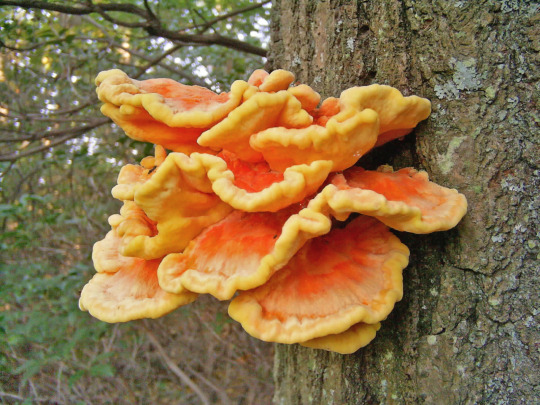

l. sulphureus description :
"the fruiting body emerges directly from the trunk of a tree & is initially knob-shaped, but soon expands to fan-shaped shelves, typically growing in overlapping tiers. it is sulphur-yellow to bright orange in colour & has a suede-like texture. old fruitbodies fade to tan or whitish. each shelf may be anywhere from 5 to 60 centimetres (2 to 23+1⁄2 inches) across up to 4 cm (1+1⁄2 in) thick. the fertile surface is sulphur-yellow with small pores or tubes & produces a white spore print. when fresh, the flesh is succulent with a strong fungal aroma & exudes a yellowish, transparent juice, but soon becomes dry & brittle."
[images : source & source] [fungus description : source]
#• fungus of the day !! •#[laetiporus sulphureus]#: crab of the woods :#: sulphur shelf :#: sulphur polypore :#092#||#mushrooms#mycology#fungus#mushroom#nature#earth#fungi#forestcore#foraging#cottagecore#crab of the woods#sulphur shelf#sulphur polypore#fotd#fungus of the day
154 notes
·
View notes
Text

On the left, the Oni! 10 ft (3m) tall, intelligent, and have magic to turn invisible and charm people and shapeshift! They can even fly! They also love dancing and music, and look at that smile!
On the right, the mimic! It can look like any object, is strong and sticky enough to grapple near anyone, and some are actually able to hold a conversation. Most just don't bother learning languages since they aren't social creatures. While they can keep growing without much limit, on average they're about 15 cubic feet in volume. Which is a 5 by 2 by 1.5 ft rectangle (152 cm by 61 cm by 36 cm). That's the size of a double-stuffed body pillow, but with moveable orifices and massive tongue!
66 notes
·
View notes
Text
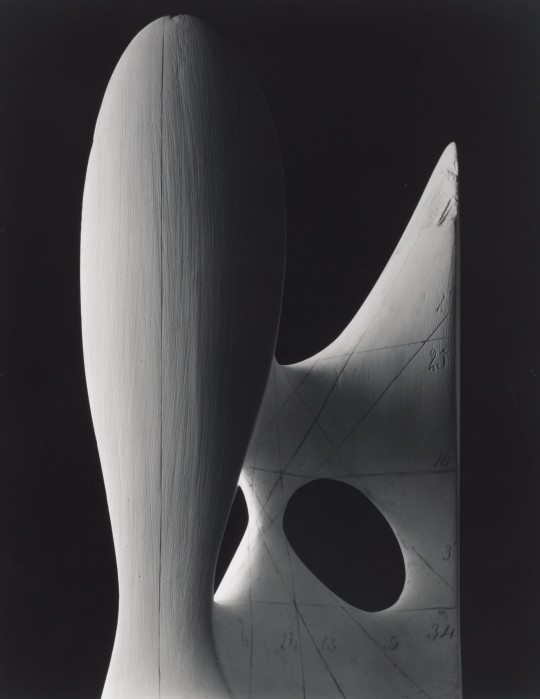
Hiroshi Sugimoto, Mathematical Form: Surface 0012
Diagonal Clebsch surface, cubic with 27 lines), 2004,
Gelatin Silver Print, Image : 58,5 x 47 cm. (23 x 181⁄2 in.)
Courtesy: Christie's
#art#abstract#abstraction#forms#abstractart#sculpture#minimal#christie's#hiroshi sugimoto#mathematics#surface#diagonal#cubic#gelatin silver print#photography#black & white
105 notes
·
View notes
Text
sleepy. let me tell you how much ive come to be sleepy since i began to live. there are 100 billion neurons filling my 1,200 cubic cm of cerebra. if the word sleepy was engraved on each dendrite and each axon in those one hundred billion neurons it would not equal one one-billionth of the sleepiness i feel at this micro-instant. sleepy. sleepy
17 notes
·
View notes
Photo
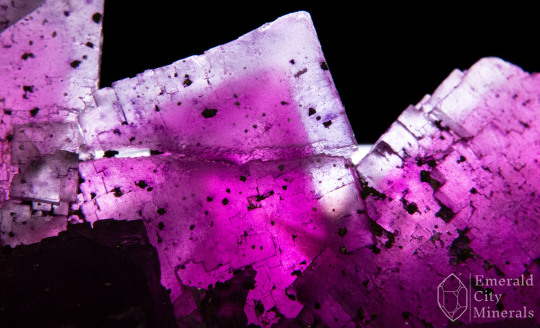
Vibrant purple-core phantom cubic fluorite (CaF2) crystals, backlit for effect. From the Minerva No. 1 Mine, Ozark-Mahoning group, Cave-In-Rock Mining Sub-District, Hardin County, Illinois, USA. Specimen size: 18 cm x 10 cm x 7 cm.
#Fluorite#Purple#Phantom#Crystal#Crystals#rocks#minerals#geology#nature#nature photography#Minerva Mine#Cave-in-rock#Illinois#mineral collection#Source: Emerald City Minerals
150 notes
·
View notes
Text
I have been researching the history of board games for school lately. That`s an insanely intersting topic! So here I bring y`all some dice from Egypt. And I have more to come

6 sided die, 30 B.C.–A.D. 364, Egypt, Serpentinite?, H. 1.8 cm, L. 1.7 cm, W. 1.6 cm, it`s at the Met nowadays
Btw cubic dice have been used in the Near East since the 3rd millennium B.C. Over time, different systems were used for distributing the points. The familiar arrangement of opposite sides adding up to seven (1-6, 2-5, 3-4) only became common later, as reflected by this die

6 sided die, 30 B.C.–A.D. 364, Egypt, white stone, 1.8 x 1.8 x 1.8 cm, the Met
#here i post whatever i do for school#dice#ancient dice#board games#history#egyptian#egyptian history#history of board games#dice goblin#dice addiction#ancient history#artwork
14 notes
·
View notes
Text
Lol lmfao even my surgeon said I need more surgery and asked if I could swing a 5/18 operation and I was like well I'll make it happen ig because the newest mass is now 6 cubic cm
16 notes
·
View notes
Text


12 notes
·
View notes
Text
While maintaining its reliance on Russian gas and oil will bring short-term gains for Hungary’s government, experts warn that over the longer term the political price for defying its Western allies could be far higher.
Never waste a good business opportunity, is a maxim of the Hungarian prime minister. Even as Viktor Orban endlessly blames the war in Ukraine for all the economy’s woes, Hungary’s government and local energy companies are now among the biggest war profiteers, energy experts claim.
“Hungary has become a trading hub for Russian gas,” Attila Holoda, a former deputy state secretary of energy and former executive of the Hungarian oil and gas company MOL, tells BIRN. “While Europe drifts away from Russian energy sources, Hungary is going in the opposite direction.”
Russian pipeline gas has not been sanctioned by the EU, but there was a fast decoupling in most EU countries after Russia’s full-scale invasion of Ukraine in February 2022, reducing the bloc’s pipeline gas imports from 40 per cent in 2021 to 8 per cent in 2023. There is a tacit expectation that even those countries that still rely heavily on Russian pipeline gas – Hungary, Slovakia and Austria – will reduce their imports by 2027.
But, to the surprise of many, the Hungarian government has actually doubled down on its energy dependence on Russia.
In October, Hungarian Minister of Foreign Affairs and Trade Peter Szijjarto proudly announced that his country would increase its annual gas imports from Russia by more than 2 billion cubic metres (cm/y). Under a long-term gas contract signed in 2021, Hungary was already buying 4.5 billion cm/y of gas from Gazprom; now that figure is on track to rise to 6.7 billion cm/y – a trend that flies in the face of EU policies to reduce Russian gas purchases.
“All storage facilities are almost full in Hungary, the country’s energy security does not justify the extra purchases,” Holoda says. “Our gas demand is around 8.3 billion cm/y, but last year 17 billion cm of gas passed through the country, which proves our growing transit role. This is a huge business opportunity for everyone involved in the gas trade.”
Profits flow from the south
Most of the gas is delivered from the south, via the TurkStream pipeline that runs under the Black Sea to Turkey and then passes through Bulgaria and Serbia. This pipeline, which became operational in 2020, was part of Russian efforts to bypass Ukraine, originally the main transit route for Russian gas to Europe.
While prices in Hungary’s long-term gas contract are pegged to the Dutch TTF and are relatively expensive, the extra amounts of gas will come with a hefty discount of 13-15 per cent, Holoda says.
Hungarian independent news site Valasz Online reported it was Gazprom that came up with the idea of selling extra gas to Hungary at a discounted price more in line with the regional market price, rather than agree to a discount on the existing long-term gas contract. This agreement is a win-win situation: Gazprom can sell surplus gas, gas traders in Hungary profit from the resale, and the government collects a large chunk of the money in taxes.
It’s certainly been a boon for Hungary’s state-owned energy company and main gas importer MVM Group. MVM announced that lower prices caused revenue from gas sales in the first half of 2024 to fall by 23 per cent year-on-year to 1.124 billion forints, but this was partially offset because the “volume of natural gas sold was higher than in the previous year”.
“The company is earning at least 500-600 million euros on the Russian gas trade,” an insider speaking on condition of anonymity, tells BIRN.
The gas is mostly sold in neighbouring countries, but some speculate it might even be ending up in Germany, which has officially cut all Russian gas imports. “Hungary has become a gas hub in the region, which gives the Hungarian government special leverage and importance over neighbouring countries,” the source says.
No wonder that Hungary is visibly dragging its feet when it comes to diversification. Foreign Minister Szijjarto – a frequent visitor to Moscow – likes to emphasise that Hungary is physically linked to Russian energy supplies by pipelines and there are basically no – or only very costly – alternatives to those well-established routes.
“It would be certainly possible to import gas from the West,” Andras Gyorgy Deak, an energy expert and senior research fellow at the Institute of World Economics, points out. “But the Hungarian government is right when it says that currently all alternatives to Russian gas or oil are more expensive.”
To be fair, Deak adds, countries like Germany have increased service fees for gas transit, and others are also contemplating it, which further raises the cost of diversification and can have a disincentivising effect for countries to give up their Russian ties.
Hungary also benefits from loopholes in the system. “Pipeline gas is easily rebranded, depending on the trading company. If it happens to be a company headquartered in, say, Morrocco, it is sold as Moroccan gas, even if it originally comes from Russia,” Deak points out. “Europe is now keen to buy Azeri or Turkish gas to diversify, but it is hard to prove what is exactly in the pipeline.”
US pressure
While the EU is currently being soft on sanctions against Russian gas, and data shows Western Europe is buying more liquefied natural gas (LNG) from Russia, the US ramped up the pressure in November when the Treasury Department introduced new sanctions on Russia that targeted Gazprombank, the financial institution which handles gas payments to Russia.
Experts warn that any foreign financial institution doing business with Gazprombank now risks being sanctioned by the US government.
Sensing trouble, Szijjarto swung into action. “We filed our request with the relevant American authorities for an exception from sanctions when it comes to payments for natural gas to Gazprombank,” he said on December 4 in Brussels, on the sidelines of a NATO meeting.
Szijjarto insisted it is not only Hungary but also Slovakia, Serbia and Turkey that would be affected by any sanctions. In any case, he added, the US has already created loopholes for itself and is buying uranium from Russia via non-sanctioned Russian banks.
Szijjarto said that US Secretary of State Antony Blinken had signalled to him his openness to striking a deal.
“This is primarily a financial sanction and it could hit Hungary hard,” the former MOL executive Holoda warns. “There could be ways to get around it, like via Turkish or other Russian banks, but it certainly makes deals more complicated.”
Hungary’s government is aware that the US could quickly put an end to its lucrative gas dealings with Russia. One way out would be to ask for a transitory period and hope to play its ‘Trump card’ after the new president takes office in 2025. However, it is yet to be seen whether Orban’s close relationship with Donald Trump could be leveraged into receiving special treatment over its gas deals with Russia.
Pouring oil on the fire
Experts agree that decoupling from Russian energy sources has been somewhat faster in the oil sector, although ambitions here are also low.
The EU banned all Russian seaborne oil in 2022, but allowed temporary exemptions for landlocked countries like Hungary. MOL is slowly reducing its Russian oil exposure, down now to 70 per cent.
“With a bit more effort, it could go faster,” believes Deak, the energy expert, who adds that “after the Russian invasion of Ukraine, there was a huge price advantage for Russian crude oil, but this is no longer the case.”
Gyorgy Bacsa, executive vice president of MOL, told Politico in an interview in November that the company would be ready to switch from Russian crude to other types by 2027 if the EU helps foot the bill for the transformation of its oil refineries. MOL’s two oil refineries in Szazhalombatta and in Bratislava, Slovakia are optimised to process heavy Russian crude, and they need to be retrofitted to process lighter types. The costs are estimated to be around 500 million dollars, which MOL would have to pay for out of its own pocket.
Holoda believes the business sector would have been ready for more diversification, “but politics set another path”. Orban and his government had their eyes on the badly needed extra cash: most of the extra revenue that MOL earned from the spread between Brent crude and Urals crude was siphoned off into the state budget in the form of extra taxes.
Yet oil diversification would be fairly straightforward, experts agree. Croatia’s Adria pipeline is reckoned to have the capacity to fully supply Hungary with non-Russian oil coming via ship to Croatian ports. However, this would come at a price that MOL (and the Hungarian government) is reluctant to pay.
Furthermore, Hungary and Croatia have been at loggerheads for more than a decade, since MOL bought a 49 per cent stake in Croatia’s state energy company INA, including management rights. The Croatian government accused MOL CEO Zsolt Hernadi of bribing former Croatian prime minister Ivo Sanader back in 2009. Sanader was sentenced to prison, while an international arrest warrant was issued for Hernadi.
The MOL chief executive claims the case against him is politically motivated and denies any wrongdoing, but his international travels have been seriously hampered by the case.
“Relations with Croatia need to be normalised, but Zagreb will ask for a price to be paid,” Holoda reasons.
Some experts wonder how the Hungarian government, which is so keen on its national sovereignty, can turn a blind eye to the security risks stemming from its over-reliance on Russian energy.
“The problem with the Hungarian strategy is that the government is not taking into account political and security risks,” an insider speaking on condition of anonymity due to the sensitivity of the issue.
Only recently, Slovakia’s interior minister, Matus Sutaj Estok, warned that “terrorist groups” were planning an attack on the Druzhba oil pipeline, Hungary’s main supply line. Sabotage of energy infrastructure or an accidental attack on the oil pipeline in Ukraine cannot be ruled out. And then there is the more-or-less articulated desire of the EU to wean itself off Russian fossil fuels completely by 2027.
“Relying on Russian oil and gas may bring short-term gains for the government, but over the longer term the political price Hungary pays for defying its European allies will be higher,” the source warns.
4 notes
·
View notes
Text
Welcome back to Science Sunday, where we analyze the science of comics and also it's Sunday!! I told you I'd bring the series back if I had a good idea, and I did!! I was watching One Piece earlier and Aokiji froze the ocean, which got me thinking, how powerful would that make him? That's what we'll analyze today!
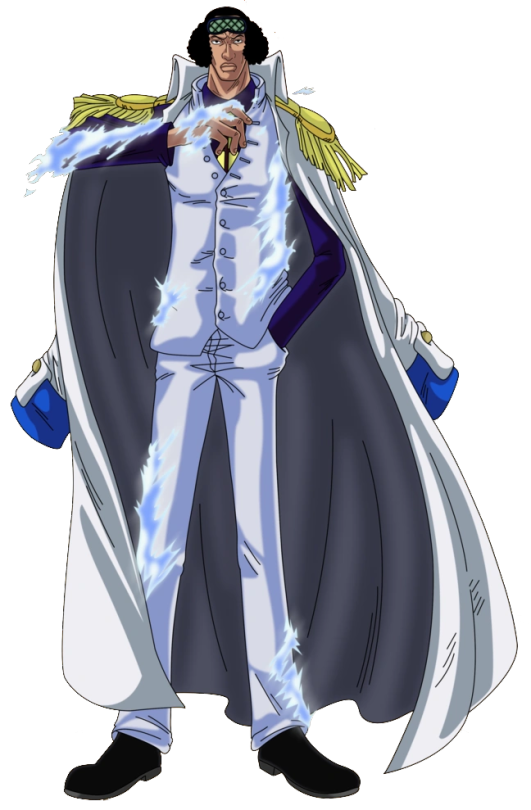
For those unfamiliar with the series, Aokiji is a high ranking member of the navy with ice powers! He travels without a ship, choosing instead to freeze the ocean and bike across it (pictured below). He has been shown in several scenes freezing large quantities of salt water with minimal effort in a matter of seconds.

Since most of One Piece takes place in tropical climates, we'll be using temperatures from the Caribbean! The average surface ocean temperature in the Caribbean is 27 degrees Celsius according to seatemperature.org. Seawater freezes at 28.4 degrees Fahrenheit according to the National Oceanic and Atmospheric Association, around -2 degrees Celsius. Multiple people are seen walking across this frozen water. Ice needs to be at least 10 cm thick to safely walk across it according to ice safety tips from My Wild Alberta.
With all that info attained, we can calculate how much water Aokiji would need to freeze to ride his bike. He would need to freeze 10 cubic centimeters of seawater for each centimeter he rides forward, dropping the temperature of the water 29 degrees in the process. Road Bike claims a beginner cyclist would average a speed of 10 to 12 mph (about 16 to 19 kmph), with an experienced cyclist hitting 16 to 19 mph (25.7 to 30.5 kph). We'll take the lowest and fastest rate to have two possible power measurements of Aokiji. Knowing the world of One Piece, he's probably much faster than even the faster time, but this is still a relatively easy task for him anyways, so it wouldn't give us a full power measurement regardless.
for the slowest speed of 16 kmph, Aokiji wou;d be covering 1.6 million cm per hour, or 444.4 cm per second. This means he would need to freeze 4444 cubic cm of water each second. That is roughly the equivalent four and a half liters. That's a lot of fluid to freeze in one second, especially given the fact he'd need to lower it's temperature by 29 degrees to do so. In the fastest condition, Aokiji would cover 3.05 million cm per hour, or 847.2 cm. This would mean freezing 8472 cubic cm of water per second, nearly eight and a half liters. These are both enormous sums of water to freeze in a single second, especially given how effortless Aokiji's travel seems to be for him.
Water has a specific heat capacity of 4.186 J/g°C, meaning it takes 4.186 joules of energy to heat one gram of water one degree Celsius. one liter of water weighs about 1000 grams, meaning Aokiji would be taking 539,474.936 joules of energy out of the water to freeze it in the slow condition, with 1,028,449.968 joules in the fastest condition. Because he is doing all this in one second, these energy estimates can also be measured in watts (joules per second). Burlington Hydro lists out the watt usage of common household appliances, with the oven being the highest at 12,500. This comes nowhere near Aokiji's lowest estimate of 539,474.936 watts. Aokiji could power 43 ovens on the low estimate, and 82 on the highest estimate. That's a lot of energy! And keep in mind, this isn't any feat of strength coming from Aokiji. This is just how he travels from place to place. The ice ice fruit is pretty serious stuff!!
#comics#comic books#dc comics#web comics#marvel#mcu#marvel mcu#c#comic panels#marvel comics#manga#one piece#aokiji#kuzan#aokiji kuzan#kuzan one piece#one piece admirals#science#freezing#cool
12 notes
·
View notes
Text

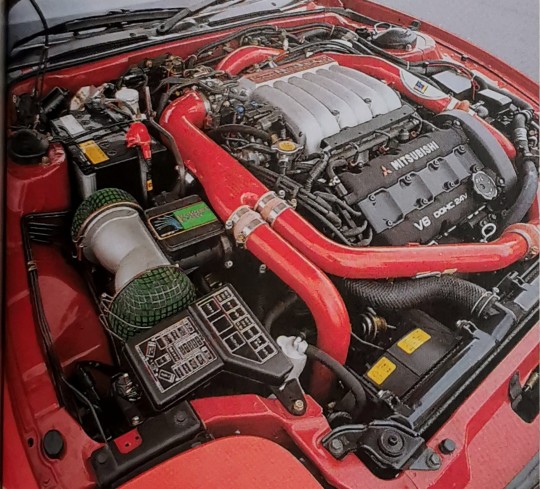

The new tuning proposed by HKS is this Legal GTO!! Legal GTO by HKS
Sales 0544541077
One of the types of tuning that HKS proposes is "Legal."It is a group of parts that meet vehicle inspections and allow you to drive on public roads legally.
Then, with those parts as the main,
The GTO with +α tuning was born here. It's called "Legal GTO." Of course, it goes without saying that this is a complete model for modification applications.
The exterior features a stealth F bumper and S step.
The overall length is 40mm longer than the base vehicle.
The turbine has been changed from the standard 09B to 13G.
Only the compressor side will be increased in size.
Equipped with Power Flow (prototype) 75mm left and right dual legal muffler.
The main fuel will be controlled by F/CON and GCCⅡ. Boost is controlled by EVC and SBC.
Although it is quite capable, it produces a power of 337.7ps/5536rpm and a torque of 48.41kg-m/4798rpm at a maximum boost pressure of 1.0kg/cubic cm
The suspension is an original kit. The spring rate is increased from F3.9 → 5.29, R2.8 →3.29 kg/mm
Regarding the wheel size, the set size for the complete model is 16 inches. For models after M/C, 17 was set as the original setting, so 17 inches is also possible. By the way, the photo shows the reference type for after M/C, which is Weds' Adura 17×8JJ and AVS's 235/45-17.
PIC CAPTIONS
Shock + SPL kit installed
Cockpit to set up various meters
The muffler is a legal muffler that meets vehicle inspection requirements.
38 notes
·
View notes